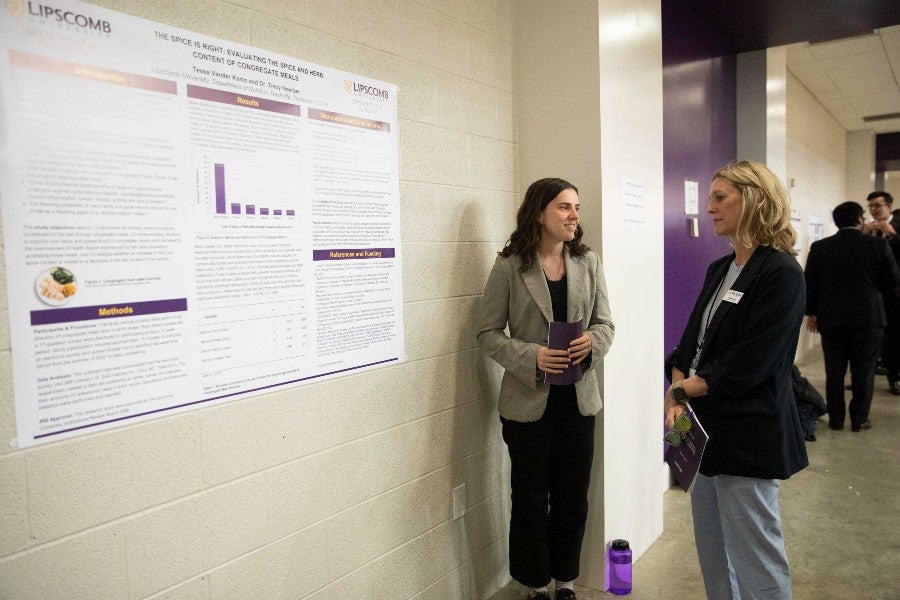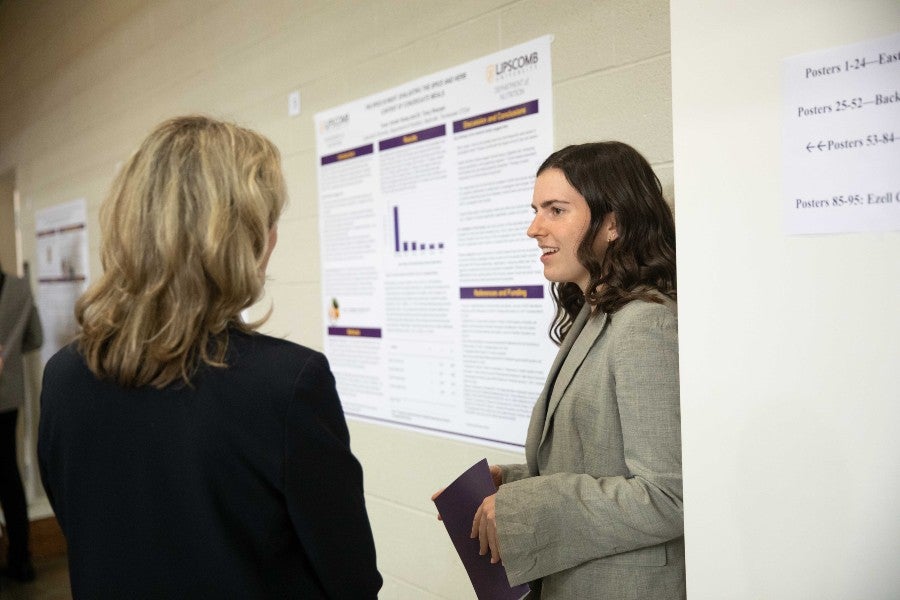Spice it up with nutrition analysis
Nutrition major and professor team up to discover how much sodium and spice is used in meals for seniors nationwide.
Janel Shoun-Smith |

As a senior nutrition and dietetics major Tessa Vander Kamp, is focused on her journey to become a registered dietitian. She found that conducting her own research project was a great way to prepare for the next step, she said.
Through an independent research study with Dr. Tracy Noerper, director of the nutrition master’s program, Vander Kamp learned a great deal about community nutrition services for senior populations, the value of communication, how the research process works at the graduate level and how to pursue external funding for nutrition research.
Vander Kamp and Noerper came together this past school year to implement an idea Noerper had been kicking around to examine the spice and herb content of food in congregate meals prepared for seniors.
The senior population, who obtains meals through community-based sites such as community centers, churches and senior centers, has not been studied much, nor have the most prevalently used seasonings in such meals, said Noerper. As the elderly begin to lose their taste, they tend to add salt to their meals. Noerper wanted to examine the relationships between use of spices, herbs and sodium in the original recipes to better understand if such meals could potentially be made healthier with less sodium but equivalent flavor using herbs and spices, she said.

Vander Kamp and Noerper contacted hundreds of sites nationwide that provide free meals to seniors through the federally funded Older Americans Act and requested recipes of all their meals served during a specified time period in May 2022. From the sites’ submissions the researchers created a comprehensive database of ingredients used in the recipes. To date, the pair have received about 300 recipes from seven states and nine locations.
The pair’s database could eventually help inform best practices for dietitians at these sites in the use of spices and herbs versus sodium. Preliminary recipe analysis indicates that a variety of herbs and spices are being incorporated in congregate meal recipes with black pepper, thyme and parsley being used most often.
Vander Kamp won an outstanding poster honor at the Student Scholars Symposium. In addition, Noerper and Vander Kamp are submitting the work for consideration for a professional award from the Foundation of the Academy of Nutrition and Dietetics as well as to the McCormick Spice Institute to apply for funding for open-source publishing.